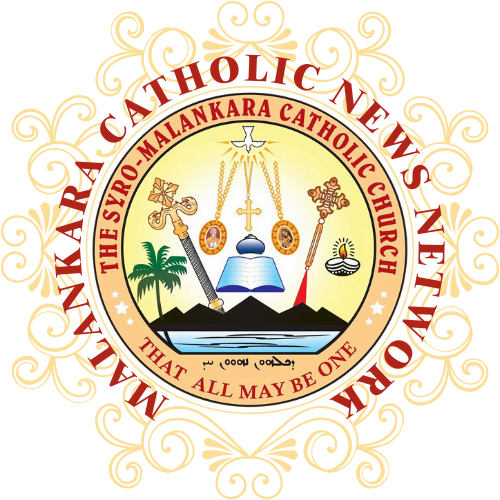Eastern tradition marked the funeral of Archbishop Benedict Mar Gregorios of Trivandrum, who led the Syro-Malankara Catholic Church for 40 years before his death here Oct. 10.
Some 20,000 people, including Church and political leaders, attended the funeral Oct. 12 in Thiruvananthapuram, capital of Kerala state, southern India. The archbishop died at 78 due to complications of bone cancer.
At his funeral, Archbishop Gregorios´ body was seated on a throne and entombed in a crypt inside St. Mary´s Cathedral. His body, wrapped in perfumed linen, sat on a throne facing east, according to Eastern tradition.
The service started at 10 a.m. with a “nagari kanikal” (showing the town) procession through Thiruvananthapuram.
As the body was moved to a flower-bedded chariot for the 1.5 kilometer procession, Syro-Malankara priests prayed together, “Go in peace, loving father, our spiritual inspiration. Go to the land of no worries and wails.”
A police jeep led the procession, followed by the faithful carrying lighted candles in four lines. Behind them a police band played funeral tunes.
Priests and nuns walked behind the band reciting prayers, then girls in a black-covered vehicle threw petals at the chariot carrying his body.
Several bishops, including Archbishop George Zur, apostolic pronuncio to India, sat in the chariot as thousands lined the route to pay their respects.
The two-and-a-half hour procession ended at the cathedral, where some 20 bishops, including three Syro-Malankara prelates, joined the three-hour funeral service.
Before burial, the golden pectoral cross, chain, ring and scepter were replaced with wooden replicas.
Only bishops, priests, nuns and lay representatives were allowed inside the cathedral while others watched outside on closed-circuit television sets.
The pronuncio read a message from Pope John Paul II which said, “the death of the archbishop is a great loss to the Indian Church in general and the Malankara Church in particular.”
The service ended with an archdiocesan priest saying farewell on behalf of the late archbishop, according to Eastern tradition. He said good-bye to the cathedral, priests, city and people three times, turning to the four directions.
Then seven priests lifted the body with the chair and the people responded: “Go in peace, you, the heir of paradise.”
The body was brought near the crypt, where the main celebrant, Bishop Cyril Mar Baselios of Bathery, made the sign of the cross with holy oil on the face, chest and knees, then made a sign of the cross with mud on the chest.
“You are dust and will return to dust but will be renewed,” Bishop Cyril said. The face was covered with a cloth before placing the body in the crypt, which was later filled with 300 kilograms of incense.
Father Thomas Kumbukattu, Trivandrum vicar general, told UCA News they bury bishops in a sitting position for two reasons.
Bishops are successors of the Apostles, who Jesus promised will sit on the throne to judge the 12 tribes of Israel at the last judgment. Father Kumbukattu said Oriental bishops are buried sitting to symbolize this promise.
Also, great Indian spiritual leaders such as Shankaracharyas, successors of 8th-century Hindu philosopher-reformer Adi Shankara, are also buried sitting.
Filling the crypt with incense is a biblical adaptation by Eastern Churches. Saint John´s Gospel says Jesus was buried wrapped in perfumed linen clothes with spices. Tombs of revered Indians are also filled with spices.
The body, according to Eastern custom, faces east, anticipating Christ´s second coming. Bishops of Orthodox Oriental Churches are also buried this way. Special evening and morning prayers are said at the tomb for three days.
The Kerala state government declared a holiday in Thiruvananthapuram Oct. 12 out of respect for the late archbishop. On the funeral day, Church schools, including Orthodox and Church of South India schools, closed in respect.
City shops were closed and streets were covered with black flags.

